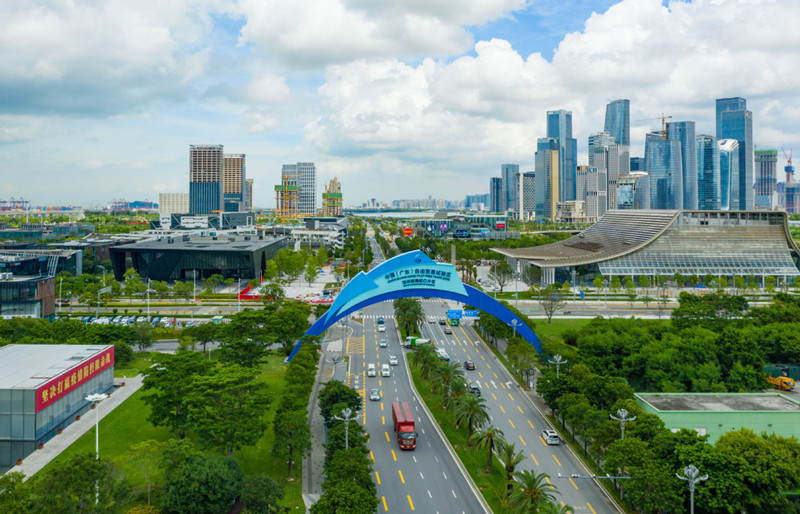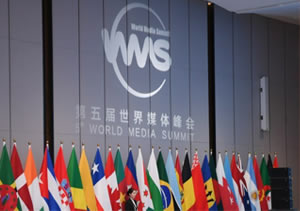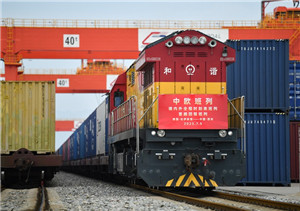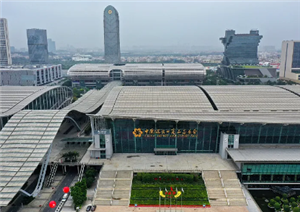
An aerial view of the Qianhai pilot free trade zone in Shenzhen, Guangdong province. [Photo by Lu Li/For China Daily]
The Qianhai pilot free trade zone in Shenzhen, South China's Guangdong province, has taken the lead in institutional innovation among FTZs in the country.
Qianhai, with a score of 88.12 points, is followed by Pudong of Shanghai (87.86), Nansha of Guangzhou (87.50), Shanghai's Lin-gang (84.49), Tianjin (83.49), Beijing (82.74), Xiamen of Fujian province (81.60), Chengdu of Sichuan (81.41), Hengqin of Guangdong (80.87) and Chongqing (80.74), according to the China Pilot Free Trade Zone Institutional Innovation Index for 2023-2024.
The special index was released by Guangzhou-based Sun Yat-sen University on Tuesday after having completed research and evaluation on institutional innovation among a total of 57 FTZs across the country.
Fu Zhengping, dean of the Institute of Free Trade Zone, Sun Yat-sen University, said all the three FTZs in the Guangdong-Hong Kong-Macao Greater Bay Area, including Qianhai, Nansha and Hengqin, are listed in the top 10 areas of the institutional innovation index this year, showcasing the economic vitality and high degree of openness in the GBA.
"The good performance in institutional innovation of the FTZs in the GBA indicates the FTZs' achievement in recent years," he said.
"FTZs in the GBA can now compete with their foreign counterparts in terms of investment liberalization, convenient Customs clearance and production cost control," Fu said at a news conference following the release of the special FTZ institutional innovation index.
"And in some aspects, FTZs in GBA are even better than foreign ones. For example, FTZs in GBA that have advanced infrastructural facilities can now basically achieve Customs clearance within a few hours," he said.
However, more efforts are needed to promote the opening-up of the service industries, including medical care, education, finance and culture, said Fu.
The professor urged FTZs in GBA to draw on the successful experience of foreign counterparts in developing FTZs in the future.
"FTZs in the GBA have the conditions to lead the development of FTZs in the country," he said.
Shi Xinxiang, deputy dean of the university's Institute of Free Trade Zone, said FTZs in Guangdong should spare no effort to develop a modern service industry — which is Guangdong's advantageous one — to enhance their competitiveness in the following years.
The institutional innovation index among China's FTZs mainly includes trade facilitation, investment liberalization, financial reform and innovation, transformation of government functions and the rule of law environment.
According to the index, Shanghai's Pudong, Guangzhou's Nansha, Shenzhen's Qianhai, Shanghai's Lingang and Beijing are the top five in terms of investment liberalization, while Qianhai, Pudong, Nansha, Lin-gang and Tianjin are the top five in terms of trade facilitation.
Nansha, Qianhai, Lin-gang, Tianjin and Pudong are the top five in terms of rule of law environment, while the top five in terms of financial reform and innovation are Pudong, Qianhai, Nansha, Beijing and Tianjin.
From the overall ranking at the provincial level, Shanghai ranked first in the 2023-24 provincial index of institutional innovation in the pilot free trade zones.
Shanghai, with a score of 86.18 points, is followed by Guangdong, Tianjin, Beijing, Chongqing, Sichuan, Fujian, Hainan, Shaanxi and Jiangsu.


















